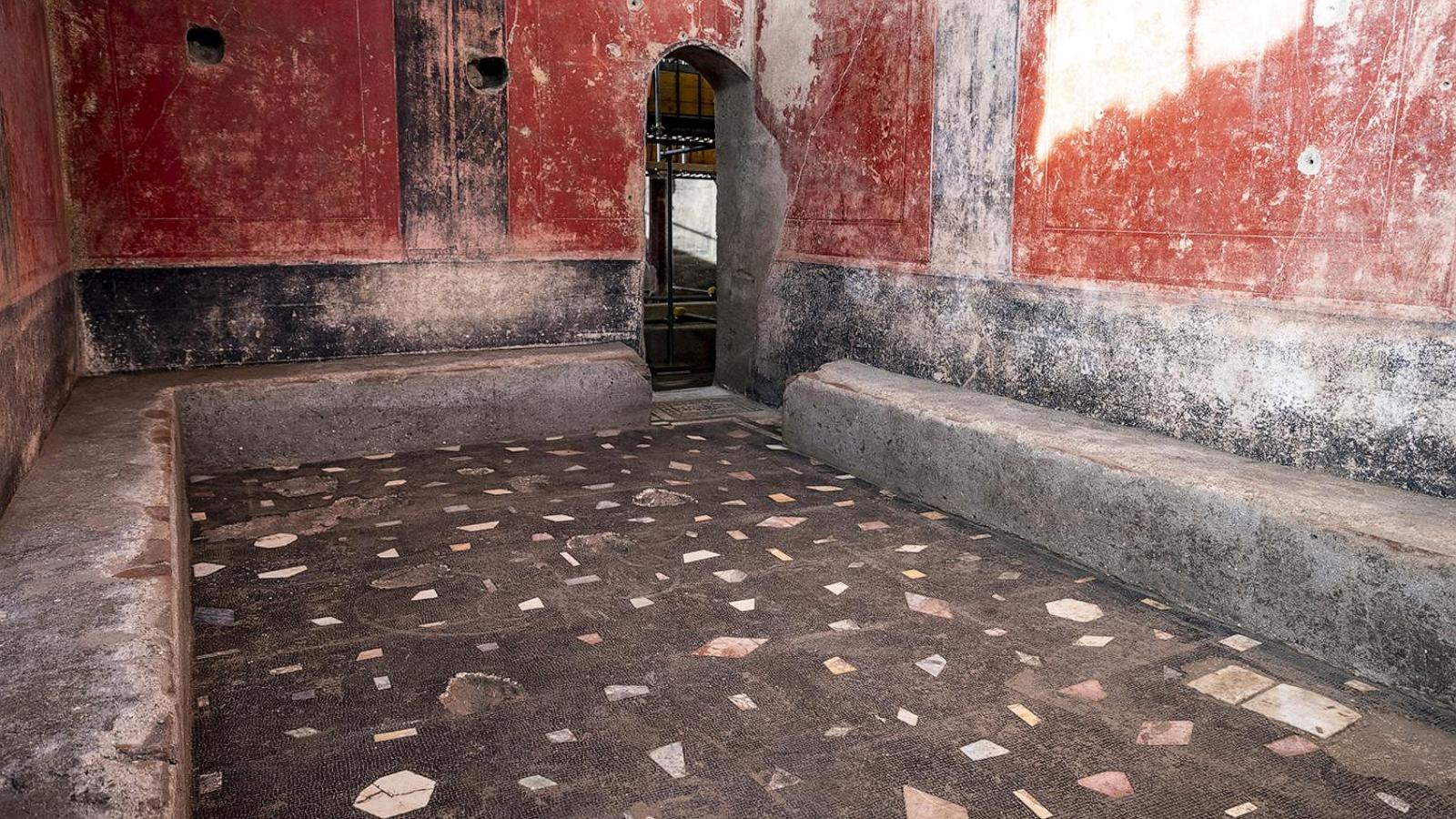Unearthing Pompeii's Luxurious Secret: A 2,000-Year-Old Private Spa!
Step into a world lost to time as we unveil the astonishing discovery of a lavish private bathhouse in the ancient Roman city of Pompeii! This isn't your average Roman bathhouse, mind you. Archaeologists have unearthed a stunning thermal complex within a private residence, complete with opulent mosaics and a sophisticated arrangement of hot, warm, and cold rooms designed for ultimate relaxation and luxury, making it arguably the most luxurious private bathhouse ever discovered! This incredible find sheds new light on the opulent lifestyles of Pompeii's elite. Prepare to be amazed by this hidden gem from the past!
A Glimpse into the Life of Pompeii's Elite
The newly discovered bathhouse, situated in Pompeii's Regio IX, offers an unparalleled insight into the lives of Pompeii's wealthy citizens. Gabriel Zuchtriegel, the director of the Pompeii archaeological park, describes it as "perhaps the largest thermal complex in a private house in Pompeii." It wasn't merely a place for cleansing; it was a central hub for socializing, networking, and showcasing one's wealth. Imagine the lavish parties, the influential gatherings, the carefully curated image projected within these stunning walls. The mosaics alone speak volumes about the opulence and sophistication of the homeowners.
More Than Just a Bathhouse: A Social Hub
The scale of this bathhouse is remarkable. With room for approximately 30 people, it could accommodate large-scale gatherings, complete with a full spa treatment regimen. Guests could move seamlessly between a very warm calidarium, designed to soothe and relax, and an invigorating cold plunge, setting the scene for relaxation. This space facilitated social climbing and building business alliances. Think of it as the ultimate networking event of its time.
The Intricate Design of Pompeii's Hot Spot
The intricate design of the bathhouse further underscores its importance. Its elaborate mosaic decorations demonstrate the wealth and power of the inhabitants. The sequence of rooms—from the steamy calidarium to the cooler bathing areas—is perfectly planned to offer a transformative spa experience, indicating a highly advanced understanding of wellness and therapeutic bathing. These beautifully preserved elements offer tantalizing details about Roman bathing traditions, technologies, and the sophisticated plumbing that supported this luxurious pursuit.
Beyond the Baths: Regio IX and Further Excavations
The discovery of this private bath complex is just one piece of the exciting puzzle unfolding in Regio IX. This area is currently undergoing extensive archaeological work and the results are astounding. Recent discoveries in the same area include a bakery, a laundry, two additional villas, and even the skeletal remains of people who perished during the eruption of Mount Vesuvius. Each find unveils fascinating facets of daily life in ancient Pompeii, offering invaluable insight into an era we can now truly witness in far greater depth.
Uncovering Daily Life in Pompeii
These recent archaeological findings showcase the variety and vibrancy of Pompeii’s everyday life. The presence of a bakery highlights the vital role of food production and trade within the city. A laundry reveals how everyday tasks such as washing clothes took place in society. Every single item uncovers new threads within the wider tapestry that is the ancient Roman city of Pompeii.
Death in Pompeii
Alongside the more extravagant findings, the unearthed remains of three people lost during the eruption bring a poignant reality to the excavations. These individual stories serve as a poignant reminder of the tragic events that ultimately buried the city. As well as celebrating this remarkable discovery, it is always a solemn moment for archaeologists as they unearth the stories and lives of individuals lost many years prior.
Wealth, Wellness, and Socializing in Ancient Pompeii
The combination of the luxurious private bathhouse and the other discoveries in Regio IX points to a fascinating interplay between wealth, wellness, and social interaction in ancient Pompeii. The wealthy inhabitants seamlessly integrated bathing and social gatherings, reinforcing their status and solidifying social bonds through these elaborate displays. This spa complex stands not just as a testament to their opulence, but as a captivating glimpse into the rich fabric of their society, demonstrating how important both their social interactions were alongside maintaining the comfort and quality of their day-to-day lives.
Social Climbing and Networking
In short, this lavish bath complex could act as a one-stop shop for everything that was luxurious to Roman Citizens. As mentioned earlier, the spa would host networking and election campaigning events. It perfectly epitomized the wealth and status of Pompeii’s inhabitants.
Take Away Points
- The discovery of a lavish private bathhouse in Pompeii provides an unparalleled look into the lives of the city’s elite.
- The bathhouse was more than just a place to bathe; it was a social hub for gatherings and networking.
- The recent discoveries in Regio IX further reveal the complexity of everyday life in Pompeii.
- The finds, including a bakery, laundry, and human remains, show many dimensions of life before the catastrophic eruption of Vesuvius.




